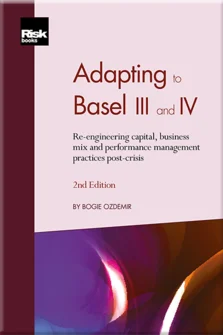Performance, Profitability Management and Hurdle Rate
Introduction
Environmental Forces: Economic Instability, Low Interest Rates, Change in Demographics, Continuing Regulatory Changes and Digital Evolution
Current Practices and their Shortcomings in Risk, Capital, Business-mix and Performance Management
Evolution of Economic Capital Measurement and Management
Integrated Capital Management: ICAAP and ORSA
Procyclicality Management: Developing a Coherent Risk Rating Framework for Risk Management, Capital Management, Stress Testing and IFRS 9 Purposes
Capital Optimisation and Business-mix Management
Performance, Profitability Management and Hurdle Rate
Optimal Management of the Interest Rate Risk in the Banking Book
Prudent LGD Estimation for Mortgages
Developing and Implementing Effective Fintech Strategies
Implementing IFRS 9 by Adapting AIRB Models
Organisational (Re)alignment
In this chapter, we will examine risk-adjusted performance metrics. We will show that they are akin to return on equity, and how they are related to the risk perspectives of the shareholders and debtholders (and, for insurance companies, also policyholders) of the FI. In our discussion of the operational details of risk-adjusted performance metrics, we will focus on the performance management of the loan portfolios. We argue that using a uniform hurdle rate in the performance assessment is not appropriate, and instead advocate the use of loan-specific hurdle rates. These loan-specific hurdle rates reflect the required rate of returns for the individual loans, and can be calculated based on market credit spreads (when credit spreads are observable) and based on Merton’s (1974) model (when credit spreads are not observable).
We will show their ex ante, real-time and ex post applications in performance management. In real-time applications, we will show how the length of the intended investment horizon is taken into account in measuring risk-adjusted profitability. In ex post performance management, we will discuss the concept of “trader’s beta” in determining the systematic risk
Copyright Infopro Digital Limited. All rights reserved.
You may share this content using our article tools. Printing this content is for the sole use of the Authorised User (named subscriber), as outlined in our terms and conditions - https://www.infopro-insight.com/terms-conditions/insight-subscriptions/
If you would like to purchase additional rights please email info@risk.net
Copyright Infopro Digital Limited. All rights reserved.
You may share this content using our article tools. Copying this content is for the sole use of the Authorised User (named subscriber), as outlined in our terms and conditions - https://www.infopro-insight.com/terms-conditions/insight-subscriptions/
If you would like to purchase additional rights please email info@risk.net






